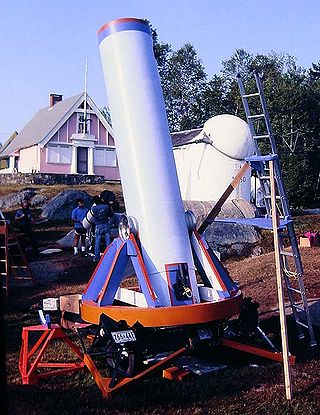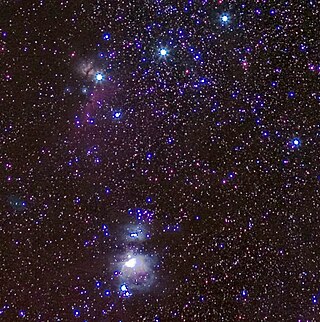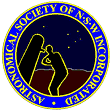
An astronomer is a scientist in the field of astronomy who focuses on a specific question or field outside the scope of Earth. Astronomers observe astronomical objects, such as stars, planets, moons, comets and galaxies – in either observational or theoretical astronomy. Examples of topics or fields astronomers study include planetary science, solar astronomy, the origin or evolution of stars, or the formation of galaxies. A related but distinct subject is physical cosmology, which studies the Universe as a whole.

Amateur astronomy is a hobby where participants enjoy observing or imaging celestial objects in the sky using the unaided eye, binoculars, or telescopes. Even though scientific research may not be their primary goal, some amateur astronomers make contributions in doing citizen science, such as by monitoring variable stars, double stars, sunspots, or occultations of stars by the Moon or asteroids, or by discovering transient astronomical events, such as comets, galactic novae or supernovae in other galaxies.

Charles Messier was a French astronomer. He published an astronomical catalogue consisting of 110 nebulae and star clusters, which came to be known as the Messier objects, referred to with the letter M and their number between 1 and 110. Messier's purpose for the catalogue was to help astronomical observers distinguish between permanent and transient visually diffuse objects in the sky.

Amateur telescope making is the activity of building telescopes as a hobby, as opposed to being a paid professional. Amateur telescope makers build their instruments for personal enjoyment of a technical challenge, as a way to obtain an inexpensive or personally customized telescope, or as a research tool in the field of astronomy. Amateur telescope makers are usually a sub-group in the field of amateur astronomy.

A star party is a gathering of amateur astronomers for the purpose of observing objects and events in the sky. Local star parties may be one-night affairs, but larger events can last a week or longer and attract hundreds or even thousands of participants. Many astronomy clubs have monthly star parties during the warmer months. Large regional star parties are held annually and are an important part of the hobby of amateur astronomy. A naturally dark site away from light pollution is typical.

Sky & Telescope (S&T) is a monthly magazine covering all aspects of amateur and professional astronomy, including what to see in the sky tonight and new findings in astronomy. Other topics we cover:

David Howard Levy is a Canadian amateur astronomer, science writer and discoverer of comets and minor planets, who co-discovered Comet Shoemaker–Levy 9 in 1993, which collided with the planet Jupiter in 1994.

Robert Burnham Jr. was an American astronomer, best known for writing the classic three-volume Burnham's Celestial Handbook. He discovered numerous asteroids, including the Mars crossing asteroid 3397 Leyla, and six comets.

Model Railroader (MR) is an American magazine about the hobby of model railroading. Founded in 1934 by Al C. Kalmbach, it is published monthly by Firecrown Media of Chattanooga, Tennessee. Commonly found on newsstands and in libraries, it promotes itself as the oldest magazine of its type in the United States, although it is the long-standing competitor to Railroad Model Craftsman, which - originally named The Model Craftsman - predates MR by one year.

A deep-sky object (DSO) is any astronomical object that is not an individual star or Solar System object. The classification is used for the most part by amateur astronomers to denote visually observed faint naked eye and telescopic objects such as star clusters, nebulae and galaxies. This distinction is practical and technical, implying a variety of instruments and techniques appropriate to observation, and does not distinguish the nature of the object itself.

Kalmbach Media is an American publisher of books and magazines, many of them railroad-related, located in Waukesha, Wisconsin.

The Society for Popular Astronomy (SPA) is a national astronomical society based in the United Kingdom for beginners to amateur astronomy.
Martin P. Mobberley is a British amateur astronomer, author, and former electronics engineer.
Astronomy Now is a monthly British magazine on astronomy and space. According to the Royal Astronomical Society, Astronomy Now is the "principal amateur astronomy magazine in Britain" with a reputed circulation of 24,000.
Stephen J. Edberg is a scientist at the Jet Propulsion Laboratory. He is perhaps best known for creating collaborative efforts between amateur and professional astronomers. A professional astronomer since 1970, Edberg still considers himself to be an active amateur astronomer as well and is an active astronomical observer, photographer, and telescope maker. He presently serves as staff astronomer for the Solar System Exploration website posted by NASA Headquarters and staff scientist for Earth science communication and for Exoplanet Exploration communication.
John "Jack" Borden Newton is a Canadian astronomer, best known for his publications and images in amateur astrophotography.

David John Eicher is an American editor, writer, and popularizer of astronomy and space. He has been editor-in-chief of Astronomy magazine since 2002. He is author, coauthor, or editor of 23 books on science and American history and is known for having founded a magazine on astronomical observing, Deep Sky Monthly, when he was a 15-year-old high school student.
Deep-Sky Planner is observation planning and logging software for amateur astronomers. It helps observers to determine where and when to view all types of celestial objects. It runs on Windows.

The Astronomical Society of New South Wales (ASNSW) is an amateur astronomy club in the state of New South Wales, Australia, founded in 1954.
Tenagra Observatory and Tenagra Observatory II are astronomical observatories in Cottage Grove, Oregon and Arizona. The observatories house heavily automated robotic telescopes.














